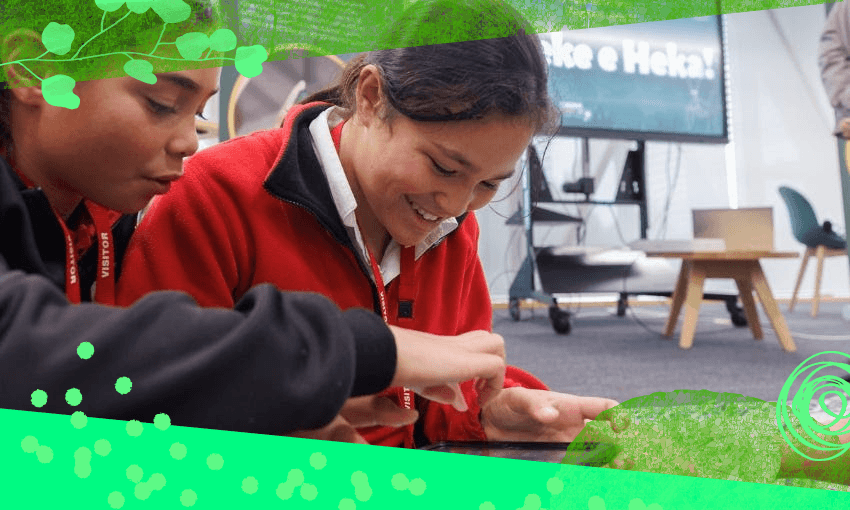A pair of apps aims to create a new crop of kaitiaki with the help of augmented reality.
This is an excerpt from our weekly environmental newsletter Future Proof. Sign up here.
Viewed through the iPad screen, a pōhutukawa tree branch is growing up through the carpet of the meeting room floor. I walk around the tree, aiming the screen to peek at all angles of the leaves, searching for telltale yellow splotches. The iPad dings: infection located!
I’m testing a new augmented reality app called Mātaihia te heka, that turns learning about myrtle rust into a game for rangatahi (young people).
Myrtle rust is a nasty fungal pathogen that arrived on New Zealand’s shores in 2017, blown across the Tasman from Australia. It infects plants in the myrtle family, like our iconic pōhutukawa, killing new shoots and leaves.
I’ve spent the last few months thinking a lot about myrtle rust for an upcoming story. I expected to spend lots of time inspecting trees – just not virtual ones! But New Zealand’s myrtle rust response is typified by creative problem-solving, I learnt, and is brimming with positive examples of partnership between te ao Māori and science – like a pair of new apps.
Spearheaded by Scion’s te ao Māori team, the twin apps aim to reach rangatahi by delivering information in “an inviting, engaging, fun way that’s relevant to them,” says Taiāwhio Waipoua-Bryers, research assistant.
‘E heke e Heka!’, available in both English and Te Reo Māori, takes the user on an interactive hīkoi (walk) through the ngahere (forest) with Tiki the native stick insect as a guide.
Crafted as a story, and with games embedded along the way, the app “bridges the gap between science and communities,” says Katerina Pihera-Ridge, an Indigenous environmental researcher who led the project.
Pihera-Ridge also envisioned a second gaming component that brings the ngahere to life with augmented reality – and that’s where the second app, Mātaihia te heka, comes in.
The apps offer “a gateway into the world of science, making future scientists,” says Waipoua-Bryers. Pihera-Ridge sees it as a way to “empower our rangatahi, Māori and community to be aware and informed as active explorers and kaitiaki.” Te Piataaio Raroa, another research assistant, notes the approach encourages users to apply their own observation methods, including maramataka (Māori lunar calendar).
An earlier testing session proved successful: “The rangatahi came to the session not knowing anything about myrtle rust, then they left teaching us about myrtle rust!” says Raroa. One nine-year-old tester even reported back about finding myrtle rust in real life, on a pōhutukawa tree.
At a launch yesterday, students from three kura were the first to play the final product. “We hope that this app sparks curiosity and inspires the next generation of scientists and kaitiaki (guardians) who already have a connection with te taiao environment,” says Pihera-Ridge.
E heke e Heka! is available for free on both Android and iOS. Mātaihia te heka is also free and is available on iOS.

